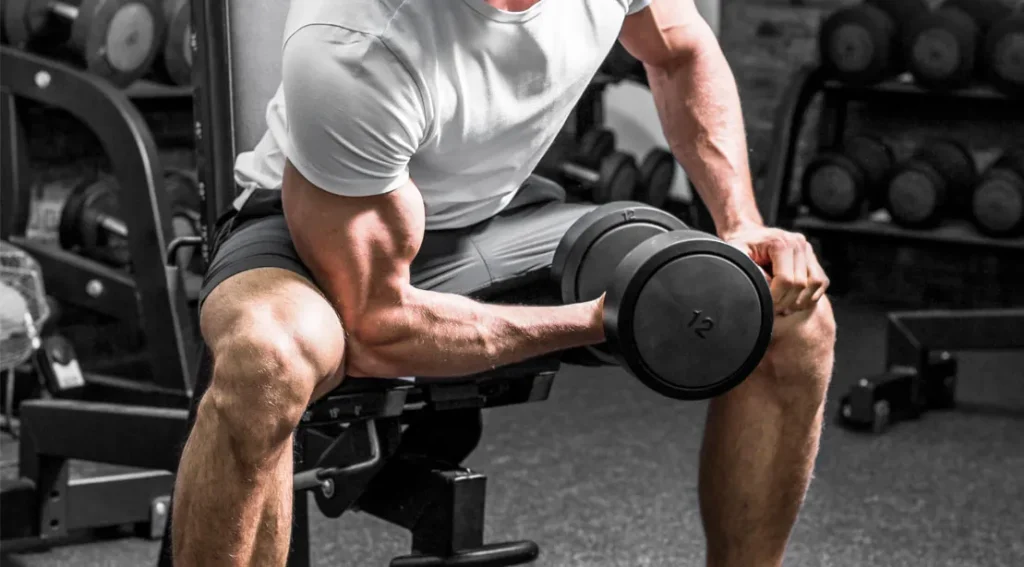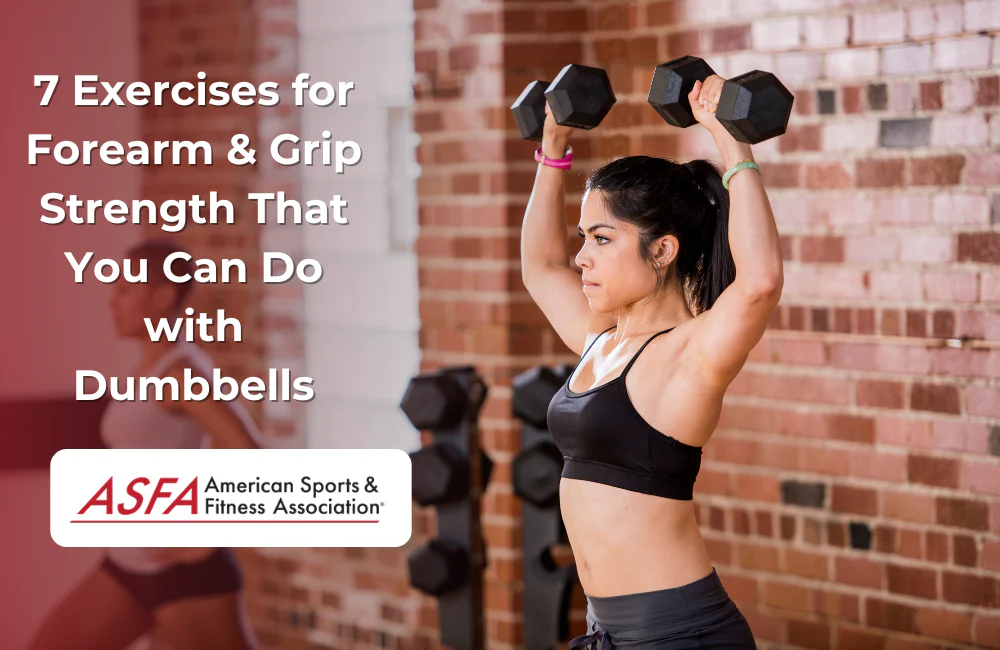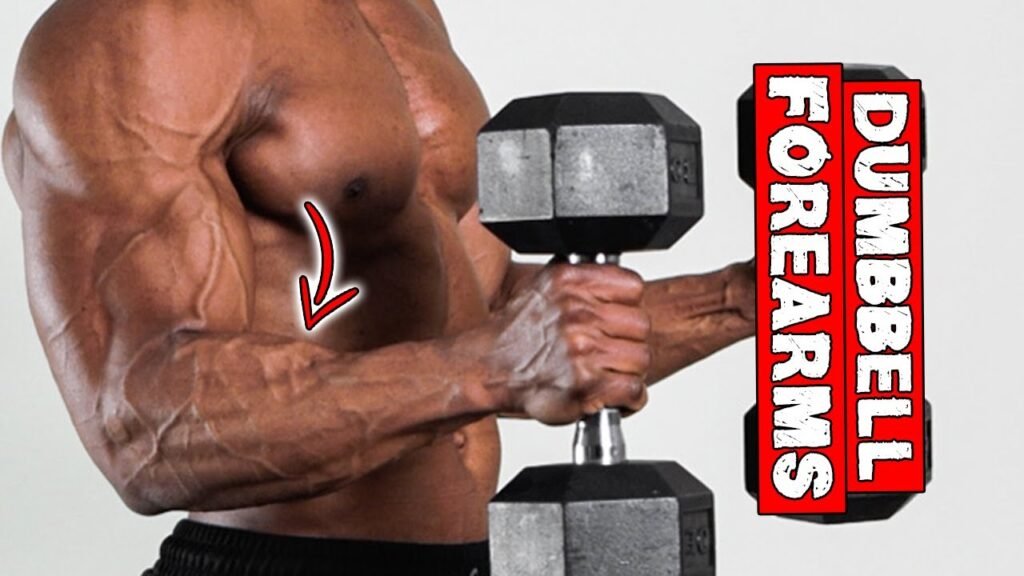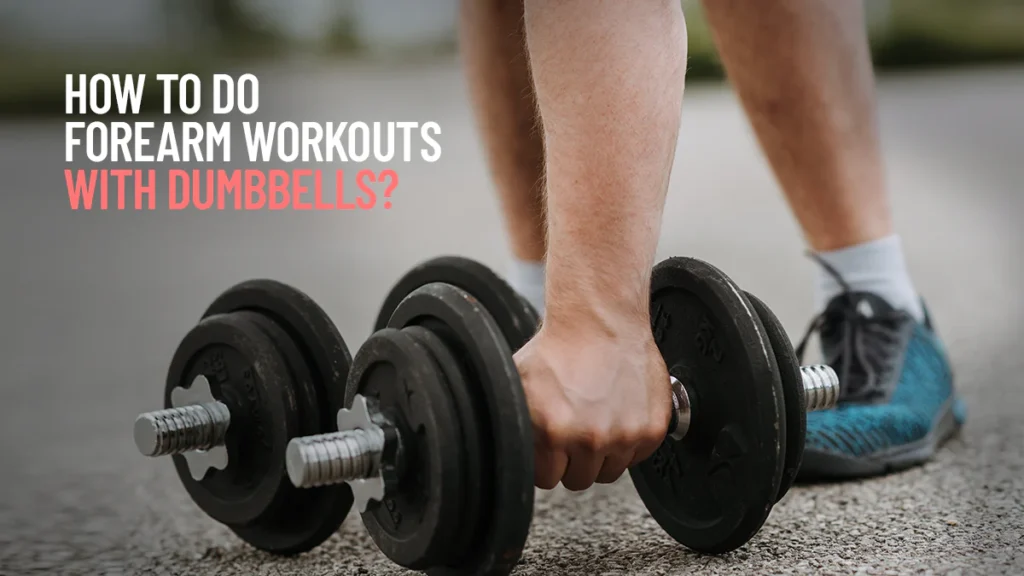Introduction
Forearms often take a backseat in workout programming, yet they’re essential for grip strength, stability, and overall arm aesthetics. Many lifters find that their grip gives out before their target muscles during pulling or carrying movements.
Training forearms with dumbbells is simple, effective, and can integrate seamlessly into your existing workout plan. In this article, you’ll learn how forearm muscles work, the best dumbbell exercises, how to structure your routine, and how to progress safely — all in a friendly, expert-oriented way.

Understanding Forearm Anatomy & Function
To train effectively, it helps to know what you’re working on:
- Flexor muscles (palmar side): These control wrist flexion and finger flexing—important for gripping motions.
- Extensor muscles (dorsal side): These extend the wrist and help stabilize the hand.
- Brachioradialis: Though technically part of the upper-arm/forearm crossover, this muscle contributes to forearm size and strength, especially in hammer-grip or reverse curl movements.
- Intrinsic grip muscles / tendon system: These connect deep within the hand and forearm and are vital for pinch strength, control, and endurance.
A balanced forearm routine should include moves for flexion, extension, and grip / carry / pinch efforts.
Read More: Forearm Exercises: The Grip-boosting Movements You Probably Aren’t Doing
Best Dumbbell Forearm Exercises
Here are some of the most effective and commonly recommended dumbbell movements for forearms (endorsed by training resources).
- Seated Dumbbell Wrist Curl (Palms Up / Supinated)
- Rest forearms on your thighs or a bench, letting wrists hang off the edge.
- Hold dumbbells with palms facing up. Curl your wrists up as far as possible, then lower slowly.
- Focus on isolating wrist movement.
- Seated Reverse Wrist Curl (Palms Down / Pronated)
- Same setup, but with palms facing downward.
- Raise the back of your hands upward (wrist extension), then lower under control.
- Reverse (Pronated) Dumbbell Curl
- Stand holding dumbbells with an overhand grip (palms down).
- Curl upward, engaging forearms and brachioradialis, then lower.
- This shifts emphasis away from biceps to the forearms.
- Zottman Curl
- Begin a dumbbell curl in a supinated grip (palms up).
- At the top, rotate wrists to pronation (palms down), and lower in that grip.
- This works flexors on the upward phase and extensors on the downward.
- Farmer’s Walk / Carry with Dumbbells
- Grab a pair of heavier dumbbells, stand tall, and walk steadily.
- Maintain tight grip and good posture.
- This is an excellent isometric/grip challenge that recruits forearms intensely.
- Pinch-Grip Dumbbell / Plate Hold
- Pinch a dumbbell (or plates) between thumb and fingers and hold for time.
- This targets deeper grip musculature and trains control.
You can also incorporate variations like fat-grip wraps, towels, or thicker handles to amplify grip challenge.

Sample Dumbbell Forearm Routine
Here’s a well-rounded forearm workout you can use 2–3 times per week (or adapt into your upper-body days):
| Exercise | Sets | Reps / Duration | Notes |
|---|---|---|---|
| Seated Wrist Curl (palms up) | 3 | 12–15 | Use moderate weight; avoid swinging |
| Seated Reverse Wrist Curl (palms down) | 3 | 12–15 | Control both phases |
| Reverse Dumbbell Curl | 3 | 8–12 | Focus on forearm activation |
| Zottman Curl | 2 | 8–10 | Rotate grip consciously |
| Farmer’s Carry | 2–3 | 30–60 seconds | Grip heavy, posture matters |
| Pinch-Grip Hold | 2 | 20–40 sec | Use lighter weight for pinch |
Programming tips:
- Do wrist and reverse curls early before grip fatigue sets in.
- Keep dumbbell weight moderate—forearms are smaller muscles.
- Slow the negative (lowering phase) for increased tension.
- You can superset flexor and extensor movements (wrist curl + reverse wrist curl) for efficiency.
- Change variables every few weeks (rep ranges, grip types) to avoid plateaus.
Frequency, Progression & Recovery
How often to train
Forearms are somewhat like calves: smaller muscles with good recovery ability. Some guidelines:
- A common approach is 2–3 dedicated sessions per week for direct forearm work.
- Many compound lifts (deadlifts, rows, pull-ups) already tax the forearms, so you don’t need extremely high volume.
- In some periods, lifters adopt higher frequency (daily light work) for lagging forearms, but only temporarily and with caution to avoid overuse.
- Listen to your body: if your grip, wrists, or forearms feel constantly sore or strained, reduce frequency.

Progression strategies
- Gradually increase weights or hold durations.
- Increase time under tension (e.g. slower eccentrics).
- Use grip challenges (thicker grips, towels, pinches) to increase demand.
- Periodize: alternate weeks focused on heavier loads (lower rep) vs lighter loads with higher reps.
- Track your grip strength (holds, carries) over time as a benchmark of progress.
Injury prevention & recovery
- Warm wrists gently (flexion / extension) before heavier sets.
- Avoid using momentum — keep movement strict and controlled.
- Limit overloading too fast — forearm tendons are susceptible to overuse injuries.
- Stretch forearm flexors and extensors after training.
- If persistent pain arises (especially in wrist or elbow), reduce load, volume, or consult a professional.
Why Dumbbells Make Forearm Training Practical
- Dumbbells allow unilateral work, correcting left-right imbalances.
- You can rotate grips easily (supinated, pronated, neutral) without changing machines.
- They’re often readily available in gyms or home setups.
- You can use lighter weights and still achieve high activation through grip challenge and time under tension.
Using dumbbells, you can comprehensively hit flexors, extensors, and grip-related musculature without needing specialized cables or machines.

Monitoring Progress & Signs of Plateau
- Log weights, reps, carry distances, and hold times.
- Monitor whether grip limits your main lifts less over time.
- Track visual and “feel” changes in forearm fullness and density.
- If gains stagnate, swap rep ranges or grips and reduce monotony.
- Ensure you are allowing recovery — stagnation may signal overtraining or lack of rest.
Read More: Painless Tattoo Spots for Beginners
Conclusion
Building stronger and more muscular forearms with dumbbells is entirely practical and highly beneficial. Incorporating movements like wrist curls, reverse curls, Zottman curls, farmer’s carries, and pinch holds targets all key forearm components—from flexors and extensors to grip musculature. Use moderate weights, prioritize form, and progress intelligently by increasing load, volume, or grip complexity over time.
You don’t need to overwork the forearms; consistent, direct sessions 2–3 times per week (or occasional light daily work) can yield solid results. Always listen to your body, warm up properly, and back off if any discomfort arises. With diligence and variation, you’ll notice improved grip endurance, fuller forearm shape, and fewer grip-limited performance bottlenecks in your lifts and daily tasks.
FAQs
1. How many times a week should I train my forearms with dumbbells?
A good starting point is 2–3 direct sessions per week. Because compound lifts already recruit forearm muscles, this is often enough. If your forearms respond poorly or lag, you might occasionally add lighter forearm work on extra days, but always watch for signs of overuse.
2. Should I use heavy weights or higher reps for forearms?
Forearms often respond well to moderate weights and higher rep ranges (12–20). However, periodically using heavier loads for lower reps (6–10) can help build raw strength. What matters more is consistency, grip challenge, and gradual progression.
3. Which is better: wrist curls or reverse curls?
Neither is better alone; both serve important roles. Wrist curls (palms up) target the flexors, while reverse curls (palms down) and reverse wrist curls target extensors and brachioradialis. A balanced forearm program includes both.
4. Can I grow forearms just using dumbbells at home?
Yes. Dumbbells let you do wrist curls, reverse curls, Zottman curls, carries, and pinch holds. Use grip variations (like thicker handles or towel wraps) to increase demand. Even with limited equipment, you can build solid forearms at home.
5. Why do I get wrist or elbow discomfort during dumbbell forearm work?
Possible causes include: using too much weight, poor form (swinging or letting elbow move), overdoing volume, or underlying tendon weakness. To alleviate, lighten the load, slow the motion, warm up wrists, and ensure proper technique. If pain persists, pause forearm work and consider consulting a professional.